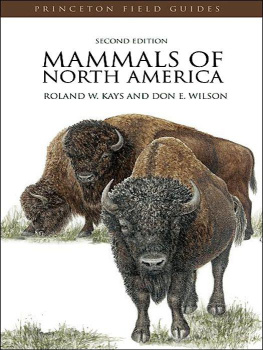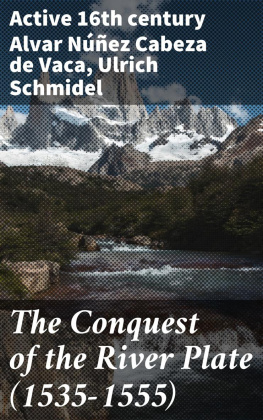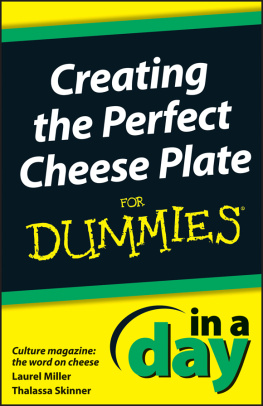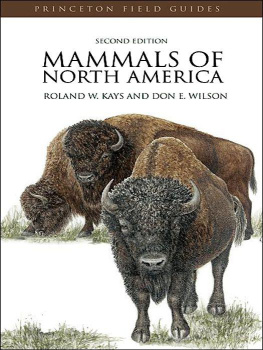P RINCETON F IELD G UIDES
For additional titles in this series visit www.guides.princeton.edu
Albatrosses, Petrels, and Shearwaters of the World, Derek Onley and Paul Scofield
Birds of Australia, Seventh Edition, Ken Simpson and Nicolas Day
Birds of Chile, Alvaro Jaramillo
Birds of East Africa Kenya, Tanzania, Uganda, Rwanda, and Burundi, Terry Stevenson and John Fanshawe
Birds of India Pakistan, Nepal, Bangladesh, Bhutan, Sri Lanka, and the Maldives, Richard, Grimmett, Carol Inskipp, and Tim Inskipp
Birds of Northern India, Richard Grimmett and Tim Inskipp
Birds of Peru, Thomas S. Schulenberg, Douglas F. Stotz, Daniel F. Lane, John P. ONeill, and Theodore A. Parker III
Birds of Southeast Asia, Craig Robson
Birds of Southern Africa, Ian Sinclair, Phil Hockey, and Warwick Tarboton
Birds of Thailand, Craig Robson
Birds of the Middle East, R. F. Porter, S. Christensen, and P. Schiermacker-Hansen
Birds of the West Indies, Herbert Raffaele, James Wiley, Orlando Garrido, Allan Keith, and Janis Raffaele
Birds of Western Africa, Nik Borrow and Ron Demey
Caterpillars of Eastern North America A Guide to Identification and Natural History, David L. Wagner
Mammals of Europe, David W. Macdonald and Priscilla Barrett
Mammals of North America, Second Edition, Roland W. Kays and Don E. Wilson
Marine Mammals of the North Atlantic, Carl Christian Kinze
Minerals of the World, Ole Johnsen
Nests, Eggs, and Nestlings of North American Birds Second Edition, Paul J. Baicich and Colin J.O. Harrison
Raptors of the World, James Ferguson-Lees and David A. Christie
Reptiles and Amphibians of Europe, E. Nicholas Arnold
Sharks of the World, Leonard Compagno, Marc Dando, and Sarah Fowler
Stars and Planets: The Most Complete Guide to the Stars, Planets, Galaxies, and the Solar System Fully Revised and Expanded Edition, Ian Ridpath and Wil Tirion
Whales, Dolphins, and Other Marine Mammals of the World, Hadoram Shirihai and Brett Jarrett
Mammals of
North America
Second Edition
ROLAND W. KAYS and DON E. WILSON

Princeton University Press
Princeton and Oxford
A RTISTS CREDITS
Sandra Doyle/Wildlife Art Ltd.: Plates 88-91, 99-112
Nancy Halliday: Plates 2-9, 28-32
Elizabeth McClelland: Plates 10-18, 33-49, 92-98
Consie Powell: Plates 76-87
Wendy Smith: Plates 50-55, 65-75
Todd Zalewski: Plates 1, 19-27, 56-64
Cover illustration: Elizabeth McClelland
Scat illustrations: Diane Gibbons
Track illustrations: Susan C. Morse and Jesse Guertin Copyright 2009 by Princeton University Press
Published by Princeton University Press
41 William Street
Princeton
New Jersey 08540
In the United Kingdom:
Princeton University Press
6 Oxford Street Woodstock
Oxfordshire OX20 1TW
All Rights Reserved
Library of Congress Cataloging-in-Publication Data Kays, Roland, 1971
Mammals of North America/Roland W. Kays and Don E. Wilson.2nd ed.
p. cm.(Princeton field guides)
Includes bibliographical references and index.
ISBN 978-0-691-14278-4 (cloth : alk. paper)
ISBN 978-0-691-14092-6 (pbk : alk. paper)
1. MammalsNorth AmericaIdentification. I. Wilson, Don E. II. Title.
QL715 .K38 2009
599.097dc22 2009001417
British Library Cataloging-in-Publication Data is available This book has been composed in Galliard (main text) and ITC Franklin Gothic (headings and tabular material) Printed on acid-free paper.
press.nathist.edu
Edited and designed by D & N Publishing, Baydon, Wiltshire, UK
Printed in Italy by Eurografica SPA
10 9 8 7 6 5 4 3 2 1
Roland W. Kays is the Curator of Mammals at the New York State Museum. His research centers on the ecology and conservation of temperate and tropical mammals, especially carnivores.
Don E. Wilson is Chairman of the Department of Vertebrate Zoology at the Smithsonian Institutions National Museum of Natural History. Recipient of a Smithsonian Institution Award for Excellence in Tropical Biology and a U.S. Fish and Wildlife Service Outstanding Publication Award, he is the author or coauthor of more than 225 scientific papers and 20 books, including three volumes on bats, The Smithsonian Book of North American Mammals, Mammal Species of the World, and Handbook of Mammals of the World.
C ONTENTS
ACKNOWLEDGMENTS
The trick to writing a good field guide is to collect the scattered information on species identification and concentrate it into one concise volume. As a whole, North American mammals are a well-studied group, and the details in this book are largely a credit to the work produced by generations of mammalogists. Although books and journal articles provided some of this detail, no field guide could be completed without substantial research in natural history museums, and this guide is no exception. Our own institutions, the New York State Museum and the National Museum of Natural History, provided the collections, library facilities, and a wide variety of witting and unwitting ancillary support. In addition, we thank the Denver Museum of Nature and Science, the University of Colorado Museum, and the Field Museum, for access to their collections. A specimen in the drawer is much easier to bring to life when an expert helps point out the relevant characters. For this museum and identification help we thank:
Greg Anderson, Andrea Bixler, Joe Bopp, Harold Broadbooks, Mike Carleton, Chris Conroy, Linda Gordon, Lawrence R. Heaney, Al Hicks, Rosanne Humphrey, Cheri A. Jones, Zack Knight, Bill Longland, Chris Maser, Jesus Maldonado, James Mead, Bruce Patterson, Jim Patton, Toni Piaggio, John Phelps, Roger A. Powell, Eric Rickart, Dave Schmidt, Michi Schulenberg, Andrew T. Smith, Bob Smith, William Stanley, and Westarp Wissenschaften. Additionally, we thank William Gannon for his assistance with chipmunk vocalizations, Dan Simberloff for his help with introduced species, and Al Hicks for plunging into caves to help us get the bats just right. Tim Page carefully read and corrected the entire text. A special thanks to Wade Sherbrooke and the staff at the Southwest Research Station for their hospitality during one of our field trips.
The range maps were provided in a GIS for this field guide by Wes Sechrest. In collaboration with many conservation, museum, and academic groups including Conservation International, the Institute of Applied Ecology, and the International Union for the Conservation of Nature (IUCN), Sechrest has compiled distribution information for all mammal species in the world. The initial products, extent of occurrence maps for all mammal species, will soon be freely available on the new Species Information Service (SIS) of the IUCN.
A field guide is part science and part art. For help and critique of artwork we thank:
Catherine Chapman, Marlene Hill Donnelly, Ben Flemer, Patricia Kernan, Clara Richardson Simpson, David Steadman, and Karen Teramura, the staff at WILDlifeART, and Christa Wurm. Thanks to Keeping Tracks (www.keepingtrackinc.org) founder and Program Director Susan Morse for taking the time off their citizen-based wildlife monitoring, educational, and conservation programs to provide her expertise regarding the animal tracks and scat illustrations.
We thank Greg Anderson, Tom Brooks, Chris Byrne, Chip Foster, Fritz Hertel, Barret Klein, Darrin Lunde, Chris Skelton, and John Young for insightful discussions about field guide design. Thanks to Ron Gill, Adam Fox, and Dimitri Karetnikov for computer help. Our editors at Princeton University Press, Sam Elworthy and Robert Kirk, gently pushed and pulled at appropriate points throughout the process, contributing greatly to the timely completion of the book.













